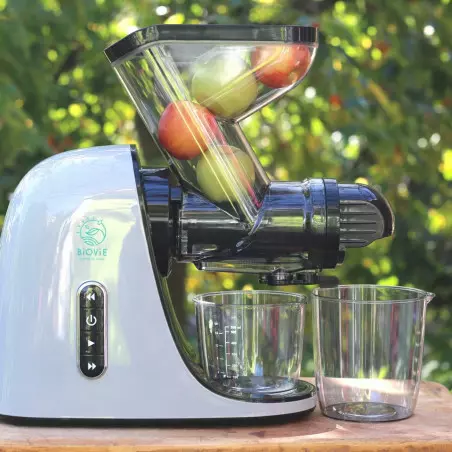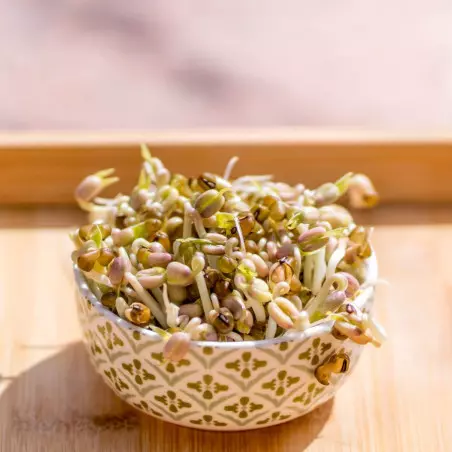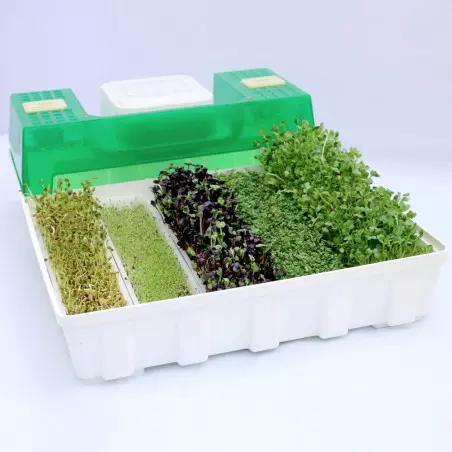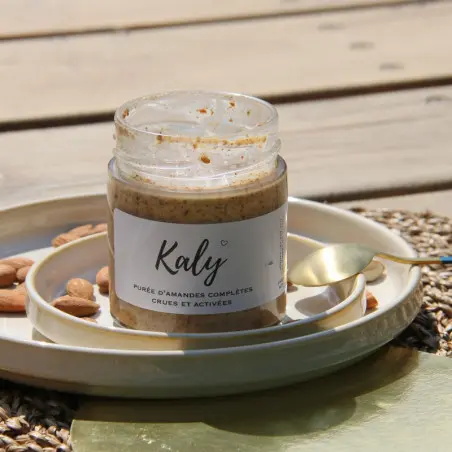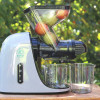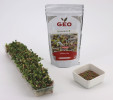You wish to adopt a living lifestyle while managing your expenses? This article helps you nourish your body with healthy foods without emptying your wallet. By discovering affordable tips and recipes, you will learn how to enjoy the benefits of theliving food, rich in nutrients and flavors. With a bit of planning and creativity, it is possible to improve your health while staying within your budget. Take action and start your journey towards more mindful and economical eating !
Understanding the food budget
Analysis of food expenses
To better manage your food budget, it is essential to start with a In-depth analysis of your current expenses. Take the time to review your receipts and bank statements to identify how much you spend each month on food. This will allow you to spot trends and understand where your money is going. For example, you may find that you spend a lot on processed foods or takeout, which can heavily impact your budget.
Once you have done this analysis, it can be very useful to categorize your expenses. Classify your purchases into fresh products, dry products, dairy products, and consumables. This will give you a clearer overview of your dietary priorities and help you determine where it is possible to cut costs. For example, a reduction in packaged products and an increase in the share of fresh fruits and vegetables can not only be beneficial for the health, but also for the wallet.
Establish a realistic budget
The next step in managing your food budget is to establish a realistic budget that takes into account your habits and your dietary needs. To do this, start by setting a fixed amount that you can allocate to food each month. Remember to include not only groceries but also dining out and the small snacks you regularly purchase. Set a goal ensuring that it is Sustainable and achievable.
To establish a realistic budget, it is also advised to plan for the unexpected. You might sometimes want to try a new recipe or enjoy a special offer on healthy products. By incorporating a small margin of error into your budget, you allow yourself the flexibility to maintain control over your expenses. Remember that the goal is to find a balance that satisfies you while staying true to your commitment to eat healthily, even on a limited budget. This requires discipline, but it is entirely achievable.
.webp)
Meal planning
Benefits of meal planning
The meal planning offers you a multitude of advantages, including more efficient management of your food budget. By taking the time to plan your meals, you can Identify the ingredients you need and avoid impulse purchases., which helps to reduce the food waste. Moreover, this approach allows you to take advantage of healthy and balanced meals, because you can choose nutritious foods carefully.
Another considerable advantage is the time you can save during the week. By having a plan in place, you can reduce the time spent thinking about what you will eat each day. This allows you to organize more easily and prepare your meals in advance, ensuring that you eat well even on busy days. This organization also promotes quick cooking, which is ideal for saving time while maintaining the quality and freshness of the dishes.
Strategies for creating a budget-friendly menu
To create a menu that respects your budget while allowing you to eat healthily, start by Make a shopping list based on seasonal and discounted ingredients. By choosing local and seasonal products, you maximize nutritional quality and reduce costs. Establish a weekly calendar For your meals, by planning simple dishes that share common ingredients to minimize waste.
In reality, it is essential to Draw inspiration from simple recipes and take advantage of batch cooking. Preparing a large quantity of meals at once and freezing them for later use is an excellent way to reduce expenses. Also, consider including pre-sprouted legumes and grains. gluten-free in your diet, because they are not only Economic but also rich in proteins, in nutrients, vitamins, and minerals.
Savvy buyers
Comparison of prices and promotions
When you are looking to eat alive On a small budget, it is essential to compare prices in different stores.. It is common for the products you are looking for to have very varied prices depending on where you buy them. Make it a habit to shop around at several stores, whether they are supermarkets, local markets, or discount stores. By noting the price of items you regularly purchase, you can also become a more savvy consumer.
Supermarket A: €3.50
Supermarket B: €2.90
Local market: €3.20
Discount store: €2.50
In addition to comparing prices, don't forget to pay attention to promotions. Some supermarkets offer discounts on fresh products at specific times of the day, particularly close to closing. By being clever and flexible, you can achieve significant savings on your food budget.
Use of coupons and discount apps
To strengthen your purchasing strategy, consider using Coupons and of the reduction applications. Many stores and brands offer coupons that you can use to reduce the cost of your shopping. You can find them in newspapers, online, or even in apps dedicated to discounts. By taking the time to gather these coupons before going shopping, you could significantly reduce your total bill.
Discount apps, on the other hand, can offer exclusive deals and instant discounts. By downloading them on your smartphone, you can access promotions on products you already consume. Pay attention to notifications and time-limited offers, as they can help you save even more. Use these tools wisely can transform your way of shopping by helping you adopt a healthy diet without exceeding your budget.
Affordable food choices
Seasonal and local foods
When you are looking to eat healthily on a budget, it is crucial to choose seasonal and local foods. These products are generally cheaper because they do not require long-distance transportation, which reduces costs. By purchasing these foods directly from local producers or at neighborhood markets, you also support the local economy while consuming fresh and nutritious products. For example, in the summer, you can enjoy juicy fruits like peaches and apricots, which you can also turn into delicious fresh juices with a Juicer, while in winter, root vegetables like carrots and beets are available and can be enjoyed as they are or transformed into remineralizing and energizing vegetable juices.
By integrating seasonal products In your diet, you not only ensure that you consume foods at their best taste, but you also benefit from maximum nutritional values. Additionally, these foods are often richer in nutrients because they are harvested at maturity. Feel free to learn about growing seasons or consult seasonal guides to maximize your food choices.
Low-cost commodities
Basic staples are essential for any budget-friendly kitchen. Foods like buckwheat, legumes, and potatoes are often available at a very affordable price. You can also vary your intake by incorporating some mung beans, rich in protein and perfect for sprouting, to add freshness and nutrients to your meals. By including them regularly in your meals, you can create nutritious and satisfying dishes without breaking the bank.
Another advantage of inexpensive commodities is their long duration of Conservation. You can buy in bulk or take advantage of special offers to save money. By keeping them in your pantry, you ensure that you always have ingredients on hand to prepare raw, healthy, and economical meals. This also helps reduce food waste, another positive aspect to consider in your approach to eating raw on a budget.
Sprouted seeds
The sprouted seeds represent a low-cost commodity with exceptional nutritional richness. By sprouting seeds at home, it is possible to multiply their vitamin content (notably vitamins B and C), minerals (iron, magnesium, zinc), and digestive enzymes, while making them more digestible.
The process of germination is simple, only requires a little water, a sprouter Adapted and a little patience. In just a few days, it provides a fresh and living source of nutrients at a lower cost. Integrated into salads, wraps, or smoothies, the sprouted seeds bring crunchiness, vitality, and diversity to the diet while remaining economical.
The tiger nut
The Tiger nut, also called "tiger nut" or Tigernut, is an ancient tuber often forgotten but deserves its place in a vibrant diet on a budget. Inexpensive when bought in bulk, it is particularly appealing because it has a long shelf life and can be consumed in various forms: as is after soaking, ground into flour for raw recipes, or transformed into "horchata," a traditional plant-based drink. It is also very easy to make a homemade tiger nut milk, a creamy and naturally sweet plant-based alternative, ideal for replacing animal milk or enriching smoothies and raw desserts.
Naturally gluten-free, the Tiger nut is rich in fiber, healthy fatty acids, minerals such as potassium and magnesium, as well as vitamins E and C. Its slightly sweet taste makes it a delicious and nourishing snack, ideal for replacing processed products while providing energy and vitality on a daily basis.
To fully enjoy its benefits, let's see together how to easily make a delicious tiger nut milk at home:
Ingredients:
- 140 g of tiger nuts (soaked the night before)
- 1L of filtered water or mineral water
Method:
- Retrieve the tiger nuts that were soaked the previous day, rinse them, and drain them.
- Add it to the blender bowl, along with the water, and blend for a few minutes.
- The indicator to know if it's ready is the sound the blender makes: we should no longer hear the small pieces of tiger nut hitting the sides of the bowl!
- Then, filter with the "milk bag"In a glass carafe. This way, you can keep it in the refrigerator for 24 hours.
Before drinking it, it is recommended to stir the bottom of the carafe. There is no need to add sugar, simply enjoy the aroma of this little earth nut... round and creamy, naturally sweet!
If you want to vary the flavors, let yourself be tempted by a tiger nut-carob mix or tiger nut red fruits... a delight !
.webp)
Economic recipes
Main course on a budget
Zucchini spaghetti with creamy avocado and lemon sauce
Ingredients (2 people)
- 2 organic zucchinis (for the spaghetti)
- 1 ripe avocado
- 2 tablespoons of fresh lemon juice
- 1 clove of garlic (optional)
- 1 tablespoon of almond paste
- A few leaves of fresh basil or coriander
- Sea salt and pepper
- Sunflower seeds (for crunchiness)
Preparation
- Wash and cut the zucchinis into spaghetti using a spiralizer or a peeler.
- In a blender, mix the avocado, lemon juice, almond puree, garlic, and herbs until you achieve a creamy sauce. Adjust with a little water if necessary.
- Mix the zucchini noodles with the sauce.
- Sprinkle with roasted sunflower seeds to add crunch.
Benefits
- Zucchini: rich in fiber, water, and minerals (potassium, magnesium).
- Avocado: source of healthy fats, vitamins E and B.
- Seeds: minerals + essential fatty acids.
A lively, nourishing, and economical dish, ready in 10 minutes !
Snacks and economical desserts
The snacks and desserts should not dig into your budget. For example, the seasonal fruits are an excellent choice for a simple, nutritious, and inexpensive dessert. A simple apple compote can be prepared with ripe fruits, a little sugar, and a hint of Cinnamon.
For more varied snacks, consider preparing some homemade cereal bars. By mixing tiger nut flakes, dried fruits, and a bit of honey and a few chia seeds, you will get a nutritious and economical snack to take away, which will provide you with good energy throughout your day. You can also try raw recipes, such as energy balls made with dates, nuts, and cocoa, which require no cooking.
In summary, there are a multitude of snack and dessert recipes that are both Economical and easy to achieve. You can play with simple ingredients to create original variations, which will keep your budget stable while satisfying your sweet or savory cravings. Don't hesitate to experiment and involve your family members in the cooking process to share convivial moments around homemade dishes.
Tips for saving money on a daily basis
Avoid food waste
For Save on your food budget, it is essential to avoid waste. Start by making a shopping list before leaving your home and stick to it. This will help you buy only what you really need, thus reducing the chances of purchasing products that you will end up throwing away. Also consider Check your refrigerator and cupboards before going out in order to use what you already have first.
Another tip to reduce waste is to learn to properly store your food. For example, some fruits and vegetables can be stored together, while others need to be kept apart to prevent them from spoiling more quickly. By taking the time to learn about the best conservation practices, you will be able to maximize the shelf life of your food and thus reduce losses.
.webp)
Batch preparation and efficient storage
The batch preparation is a fantastic method for saving time and money. By preparing multiple meals in advance, you can optimize your shopping and ensure that you have healthy meals on hand. For example, cooking large quantities of dishes like soups or vegetables not only allows you to reduce the time spent in the kitchen during the week, but also to reduce costs by using ingredients optimally.
Invest in Airtight containers of quality can also make a significant difference. Not only does it protect your food from odors and moisture, but it also allows you to properly portion your meals to avoid excessive servings. By labeling your containers with dates, you ensure that meals are consumed in order of age, thus avoiding additional waste.
Conclusion: Making food a priority without compromising your budget
Adopt a healthy eating with a limited budget should not be an insurmountable challenge. You can prioritize fresh, local, and seasonal foods that offer excellent nutritional value at a lower cost. Consider plan your meals in advance and to shopping with a list to avoid impulse purchases. By purchasing in bulk And by comparing prices in different stores, you can save significantly. Legumes, vegetables, and fruits on sale are often good options to enrich your diet without breaking your budget.
Furthermore, preparing your meals at home is an effective way to manage your food expenses. It allows you to control the ingredients and portions while reducing food waste. Learn some simple and quick recipes, inspired in particular by plant-based diet, can transform your approach to cooking. You will see that eating healthily on a budget is not only possible but also rewarding. As you progress in a more responsible kitchen, you take care of your health while being mindful of your finances.
FAQ
Q: What does "eating alive on a small budget" mean ?
A: Eating healthy on a budget means adopting a healthy and balanced diet while adhering to a limited budget. This includes meal planning, practicing healthy cooking with simple ingredients, purchasing inexpensive but nutritious foods, and avoiding costly processed products.
Q What are the cheapest and healthiest foods I can buy ?
A: Foods such as legumes (lentils, beans), seasonal vegetables, sprouted seeds, and fruits on sale are often inexpensive and nutritious.
Q: How can I save money on my grocery shopping ?
A: To save money, you can plan your meals in advance, make a shopping list to avoid impulse purchases, buy in bulk, prioritize store brands, and use coupons. It is also beneficial to visit local markets for fresh products at reduced prices.
Q: Is it possible to eat a balanced diet on a very limited budget ?
A: Yes, it is entirely possible to eat a balanced diet on a limited budget. By choosing unprocessed foods, cooking at home, and avoiding eating out at restaurants, you can maintain a healthy diet without exceeding your budget. It is important to vary nutrient sources to stay healthy.
Q: How can I cook healthy and cheap meals quickly ?
A: To quickly cook healthy and inexpensive meals, consider preparing large quantities of dishes at once (meal prep) that you can store in the refrigerator or freezer. Opt for simple recipes with few ingredients, such as soups, casseroles, or salads with legumes.



